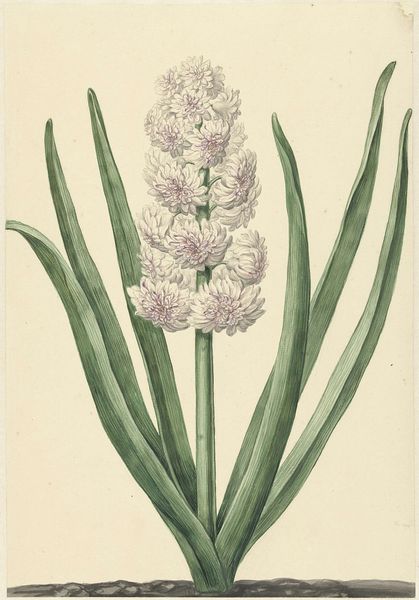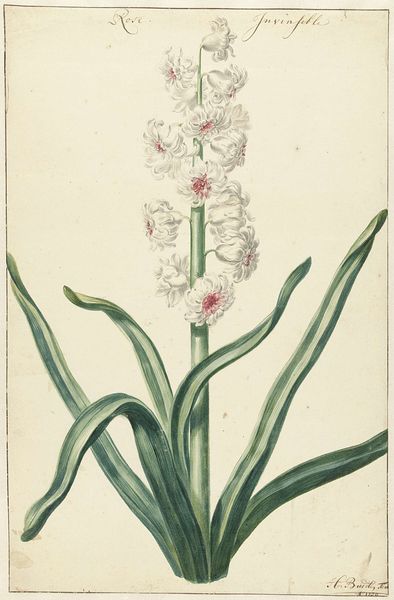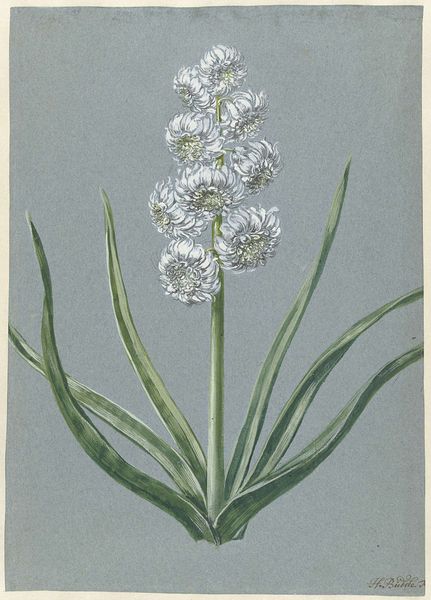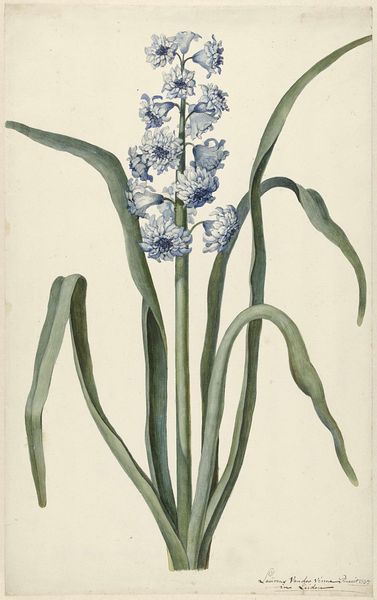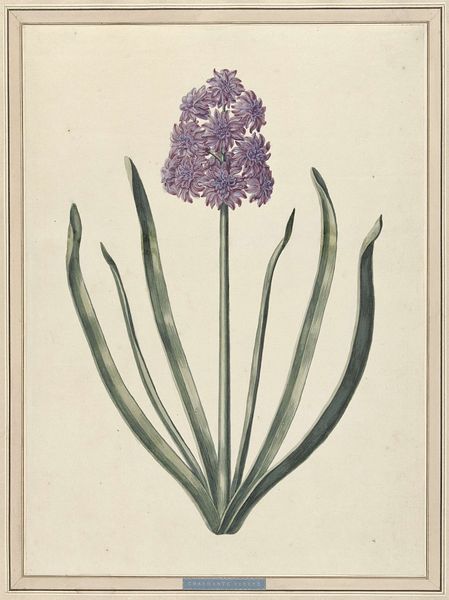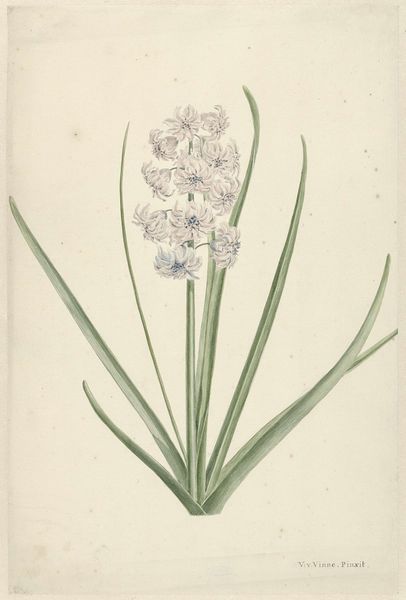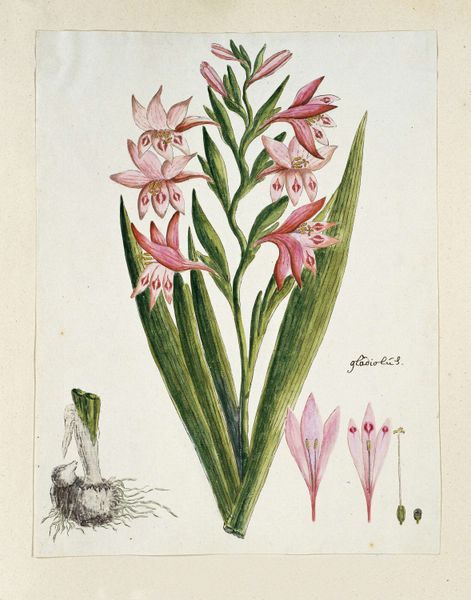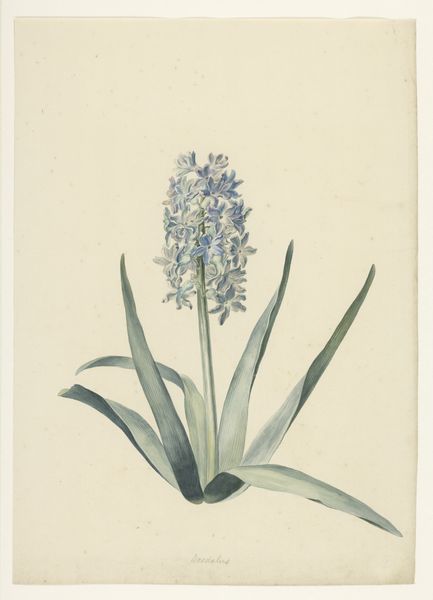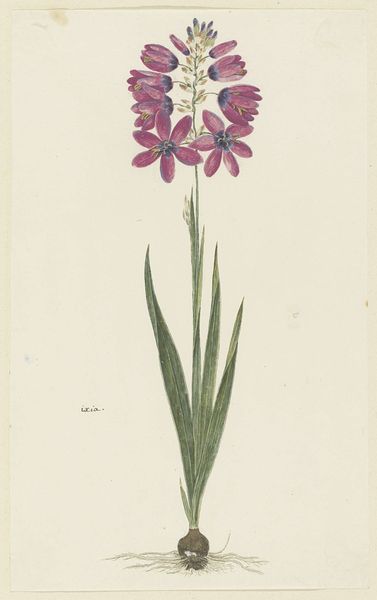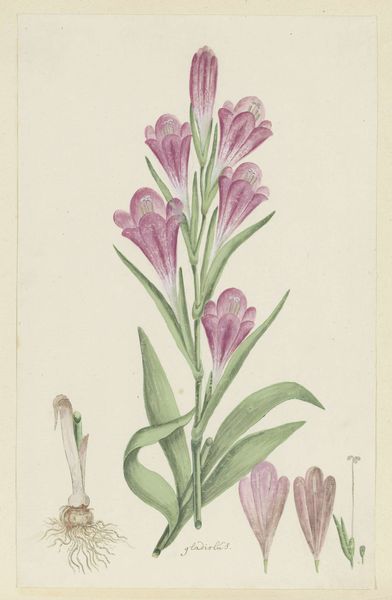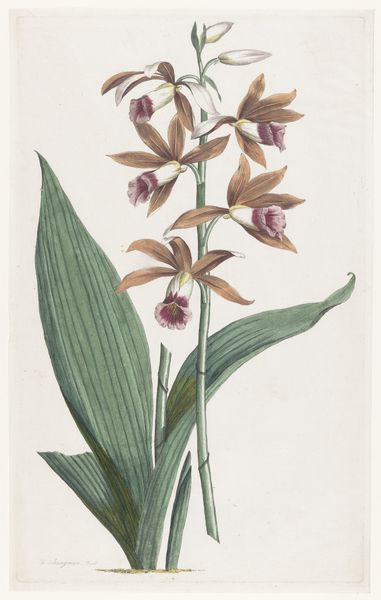
drawing, painting, paper, watercolor
#
drawing
#
painting
#
paper
#
watercolor
#
botanical drawing
#
botanical art
#
realism
Dimensions: height 471 mm, width 300 mm
Copyright: Rijks Museum: Open Domain
Hendrik Budde depicted this white hyacinth, also known as 'Roi de Paris', in a detailed watercolour. The Dutch Republic became a hub for botanical art during the early modern period. The intense cultivation of flowers, particularly tulips and hyacinths, was a source of national pride, but also economic speculation, during the 17th and 18th centuries. The image creates meaning through visual codes: the intense whiteness of the blooms, the careful attention to detail, and the naming of the variety associates this flower with purity and luxury. The institutions of art and science often overlapped in this period. Botanical artists worked closely with scientists to document new species and varieties and the drawings would form part of a wider project of understanding and classifying the natural world. The historian's role is to place the work in its social and institutional context, delving into the archives of scientific societies or exploring the economic history of flower cultivation to understand its full meaning. Art is always contingent on the social and institutional forces that shape it.
Comments
No comments
Be the first to comment and join the conversation on the ultimate creative platform.
